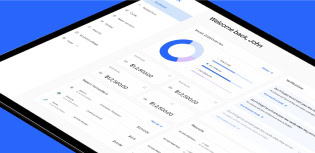What’s the true cost of manual expense reporting?

What is manual expense reporting really costing your organization? At first, it might seem like you’re saving the company money by not spending on expense management software. But there are real costs to using manual expense processes, including lost productivity, high error rates, and lack of visibility.
Direct costs of manual expense reporting
Employees submitting expense reports manually have to collect paper and digital receipts, fill out each expense with GL codes and transaction details, and submit them to the finance team.
Finance staff then review each expense to make sure it has a receipt attached and accurate GL codes and transaction details. Any errors or missing data needs to be followed up on with the employee, which can involve multiple emails.
All that manual work for both employees and finance staff adds up to lost productivity. Time spent chasing receipts and correcting expense reports could be spent on more strategic work for the organization. According to a study by the Global Business Travel Association (GBTA), respondents on average spent 3,000 hours per year correcting expense report errors.
Errors in expense reports can occur both when the employee submits the expense report and when finance staff review it. Employees might forget to include specific expenses, miscategorize expenses, or expense items that are not covered by the organization. Finance teams might not catch missing GL codes or transaction details, fail to notice that an unapproved item has been expensed, or have to chase down a fraudulent vendor charge.
Whether intentional or not, these errors show up on financial statements in the form of fraud. According to the Association of Certified Fraud Examiners (ACFE), “organizations lose 5% of their revenue to fraud annually.” And a good portion of that is check fraud. The Association for Financial Professionals (AFP) 2024 Payments Fraud and Control Survey Report found that ⅔ of reporting organizations experienced check fraud.
And with all this data input happening manually, it’s nearly impossible to get any visibility into spending. Each group in the company might want to know how much they have spent against their target for the year, for example. This kind of detail can only be accessed through hours of work in spreadsheets. And even with all that work, there’s the risk of erroneous data due to manual manipulation. Not to mention the time hours (or days) spent on this work = lost productivity.
Finance leaders are well aware of the lack of visibility. According to Pigment’s 2024 Office of the CFO Report, “89% of finance leaders are making monthly decisions they know are based on inaccurate or incomplete data.“
Indirect costs of manual expense reporting
There are additional, indirect costs that result from the lost productivity, high error rates, and lack of visibility. The burden of manual work on employees and finance staff can lead to low employee satisfaction. Employees who are dissatisfied could be more likely to take their skills elsewhere. High error rates in expense reporting can cause non-compliance with financial regulations. Whether accidental or not, compliance mistakes can have heavy financial penalties.
The lack of visibility into financial data can lead finance leaders to have low confidence in financial decision-making. Finance leaders might miss key opportunities for investment or be severely under- or over-budget. And the combination of high manual effort, high error rates, and low visibility can have downstream effects, such as low to zero bandwidth for strategic financial guidance. With their heads stuck in the day-to-day operations of the business, it’s increasingly difficult for CFOs to see financial trends and offer direction.
What do organizations need from expense reporting systems?
In order to eliminate these problems, finance leaders need to leverage expense management platforms that shift work to systems that allow employees to focus on productivity . These systems must provide:
Faster expense approval processes
Expense management software needs to speed up the process of submission, review, and approval of expense reports. That means drastically slashing the amount of time it takes for each one of these steps, and increasing employee productivity in the process.
The system must be able to capture data from employees – before they have to manually put it in an expense report. It also needs to understand the expense data it’s ingesting in order to categorize it appropriately, and verify the expense details to make sure they are correct. Any review that takes place should be on an exception basis only. And approval should happen with as few clicks as possible.
Airtight compliance frameworks
Rather than catching errors after they happen, expense management software must provide a rigid framework that keeps them from happening. To do that, they’ll need to create a series of rules and regulations that apply to cardholder purchases. Using these rules, they can block inappropriate transactions before they happen. In addition, expense management platforms will need to accurately ingest expense data and verify that it’s correct – without manual input from finance staff. All this work is programmed upfront so employee productivity isn’t hampered.
Robust visibility into corporate spend
Instead of combining various data sources with low levels of accuracy, organizations need software that centralizes all financial data. They need a single source of truth where they can run reports with many combinations of filters, in order to provide the answers to questions from different groups in the company. They also need to know how spend is happening in real time, so they can monitor project budgets, provide financials for investor reporting, and more.
How PEX automates manual expense reporting processes
PEX’s expense management platform takes the manual effort out of expense reporting. By replacing manual processes with automation and AI-enabled functions, PEX increases productivity, eliminates manual errors, and creates organization-wide visibility into corporate spending. PEX provides:
Automated and AI-enabled data capture
- With PEX’s receipt capture, employees can text, email, or upload receipts directly to PEX’s expense management platform. AI scans receipts and matches them to the appropriate transaction in the system.
- AutoTagger enables users to automatically apply GL codes to transaction records. GL codes are programmed upfront, which tells the system once which GL codes go with which types of transactions.
- AI-based receipt matching matches data from either PEX Visa® Prepaid Card or PEX Visa® Commercial Card transactions to employee receipts. It looks at the amount on the card transaction and connects it to the line item on the receipt.
Preemptive approval & spend frameworks
- PEX’s Advanced approval policies provide a variety of workflows for expense approval. Administrators can create rules for each department, purchase type, tag, or any other combination. They can also set how many levels of approval are needed for each type of purchase, and who needs to do the approving. Conversely, admins can also auto-approve purchases below a certain threshold.
- Custom spend rules allow admins to create unlimited rules to manage spending. They can restrict by merchant type, physical location, and even day of the week. Admins can also create cardholder groups to set role-based spending privileges and restrictions.
Robust visibility into corporate spending
- PEX’s integration marketplace empowers finance leaders by syncing PEX’s expense management data with accounting platforms like QuickBooks, Oracle NetSuite, GreenSlate, CMiC, BlackBaud, Sage Intacct, Xero, and more. By connecting PEX’s expense data with the company’s accounting platform, CFOs can see a complete picture of spend.
- Multiple account management enables admins to see various accounts all within one PEX login. A media company might have multiple accounts open at any given time, based on where they are in the production cycle. Admins can log into PEX and select the account they need to work on, and see a consolidated view of all accounts.
Real-life examples: companies saving time and money with automation
By changing from manual expense reporting to PEX’s automated expense management platform, customers have seen compelling results. During PEX’s 2023 customer survey, 50% of customers save time on expense tracking with PEX. 60% of customers save money using PEX’s custom spend rules. Additionally, during PEX’s September 2024 customer webinar, we polled over 1,000 customers. On average, customers said that they save:
- 2.92 minutes adding GL codes to each transaction,
- 4.01 minutes getting receipts from employees per transaction, and
- 3.47 minutes uploading receipts per transaction.
Joshua M. PEX admin and G2 Reviewer, has this to say about PEX:
“I love the way PEX forces individual ownership of the various tasks surrounding expense management. We were previously using credit cards and chasing down receipts and budget codes, but now no one asks me for budget codes anymore (they’re autocomplete in the app) and I get spend requests directly in the app. The comments make it easy to remember upon later review what each spend was for! Oh, and it integrates with our accounting software!”
Rid your company of manual expense management – and reap the benefits
Manual expense reporting might seem like a way to save on expensive software, but it actually has the opposite effect. Those manual processes cost companies in reduced employee productivity, increased error rates, and low to no visibility.
By leveraging PEX’s automated expense management platform, finance teams can drastically reduce the amount of time spent on expense reports, eliminate costly errors, and create company-wide visibility into financial spend.
Want to learn how to overhaul your expense reporting processes with automation and AI? Contact us to schedule a customized demo of the PEX platform.
Similar resources
Opinions, advice, services, or other information or content expressed or contributed here by customers, users, or others, are those of the respective author(s) or contributor(s) and do not necessarily state or reflect those of The Bancorp Bank, N.A. (“Bank”). Bank is not responsible for the accuracy of any content provided by author(s) or contributor(s).








